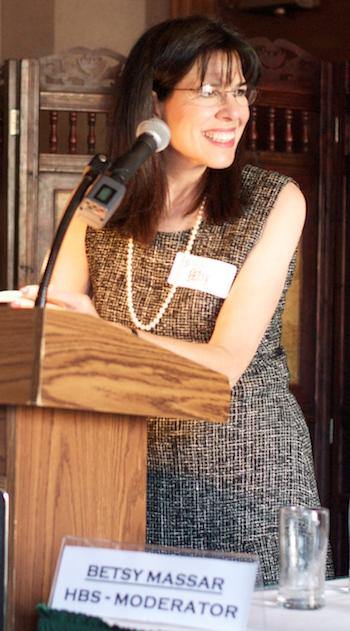
What are your better odds: 20.7% or 51.1%?
The second one? That’s right. Who wouldn’t pick a 1-in-2 shot over 1-in-5? That’s the difference in acceptance rate between the Wharton School’s executive and full-time MBA programs. Think those odds are in your favor? Head to the University of Michigan, where the full-time and executive MBA program rates stand at 27.1% and 76.3% – or a near 50% difference.
WHO NEEDS THE GMAT?
Wondering if that dynamic only applies to executive programs? Think again! At NYU Stern, the full-time acceptance rate is a moderate 23.2%. Care to guess what the part-time rate is? Try 68.1%, with part-time averages ranging from 51.4% (Carnegie Mellon) to 90.0% (Ohio State). You’ll find a similar trend with online programs. The University of Florida is a case in point, where the difference between the full-time and online rates is 18.8% vs. 45.8% respectively.
That begs the question: Why pursue a full-time program in the first place? The degrees are the same, whether they are full-time, executive, part-time, or online, right?
It’s a tempting argument, that’s for sure. Beyond acceptance rates, taking a path other than the full-time MBA saves applicants from the GMAT in many cases. Recently, P&Q reviewed 2018 data submitted by the 40 highest-ranked business schools to U.S. News & World Report. Among the 35 programs with corresponding full-time and EMBA programs, just eight supplied an average GMAT score, with another six telling P&Q that GMAT scores weren’t required for EMBA admission. In fact, the Wharton School is the only Top 25 MBA program to share their average GMATs for EMBAs with the public. However, part-time MBA programs are far more transparent when it comes to GMATs. Just look at the 25 programs on this list with both full-time and part-time programs. All 25 supply average GMATs in both categories.
BACKGROUND DIFFERENTIATES EMBAs
Alas, part-time programs target the same high potentials in their late 20s and early 30s as their full-time cousins. In contrast, many EMBA programs waive GMATs in lieu of work or leadership experience. That has been the experience of experts like Betsy Massar, founder and CEO of Master Admissions. A veteran of Goldman Sachs and Deutsche Bank, Massar has counseled over 300 MBA applicants over the past decade, helping many into top programs like Harvard, Wharton, Stanford, and Chicago Booth. To her, the EMBA isn’t a way around the GMAT (or GRE). Instead, making the GMAT optional simply recognizes reality.
“I remember reviewing materials when MIT first started their weekend Executive MBA program,” Massar notes in a September interview with P&Q. “Their argument was that the GMAT was optional – and it may still be – because so many of their candidates already had backgrounds in fields like engineering or were already working in business in a quantitative role. I think the schools are not requiring it because so many of their candidates have proven that they can do the analytical work that is required for an MBA.”
Massar herself chose the full-time route, earning her MBA from Harvard Business School in the legendary Class of 1982, which included JP Morgan Chase CEO Jamie Dimon, former General Electic CEO Jeffrey Immelt, former Morgan Stanley co-president Zoe Cruz, and Michael Fascitelli – dubbed the ‘next Warren Buffet’ in some quarters For Massar, the various MBA programs cater to different market segments, which reduces the importance of variables like acceptance rate and average GMAT.
BRINGING SOLUTIONS TO WORK IMMEDIATELY
Part-time MBA programs, for example, enable young professionals to maintain their roles and income stream. Even more, the part-time route provides a mix of focus and access that appeals to candidates in this segment. “You’re also not feeling the pressure to run off for the weekend to Octoberfest with your classmates,” Massar adds. “With the part-time, it is a level of maturity. You can still be involved in clubs and networking across the program. You also have the opportunity to network with people who are already working in companies where you may want to work.”
The executive programs are targeted more to mid-career professionals. They carry certain wrinkles, such as weekend (and some Friday) availability. Many students commute to class through train or plane as well. On one hand, the EMBA isn’t an unrelenting 24×7 experience like the full-time option. That said, it mixes full-time job requirements with another 20-30 hours of academic demands. While the EMBA’s workload is heavy, it brings an invaluable element to the experience.
“You’re applying the lessons from your classroom to your work and everyone else’s work of your cohort,” Massar explains. “That’s a really exciting part of your education that you’re not doing in a full-time program. You’re bringing solutions to work and work problems to class – so that makes for a different kind of learning environment, which can be really exciting.”
A UNIQUE SET OF CHOICES
In other words, Massar adds, the choice comes down to self-selection – finding a program that is right for where students are in their lives. While the academic requirements may be consistent across a school’s MBA programs, the differentiator comes down to the right experience.
“It’s a different experience for everybody,” Massar adds. “You’re buying the experience, not necessarily the piece of paper. It’s a level of maturity too…It’s not the same level of discourse. There is a difference between emerging leaders – people with leadership potential – and people who are already ready to refine their leadership skills like executive MBAs…Whether you are there with a bunch of 28 year-olds or people who have 10 years or more of experience, it really depends on where you are going to learn the most.”
How do full-time, executive, part-time, and online MBA programs compare in areas like acceptance rates, average GMATs and GPAs, and the percentages of women and international students? Click on the links below for a school-by-school comparison for the 40 highest-ranking American MBA programs.
ACCEPTANCE RATES / AVERAGE CLASS SIZES
AVERAGE GPAs / AVERAGE STUDENT AGES
PERCENTAGE OF WOMEN / INTERNATIONAL STUDENTS
DON’T MISS: 2018 BUSINESS SCHOOL RANKINGS: THE COMPLETE COLLECTION






Questions about this article? Email us or leave a comment below.